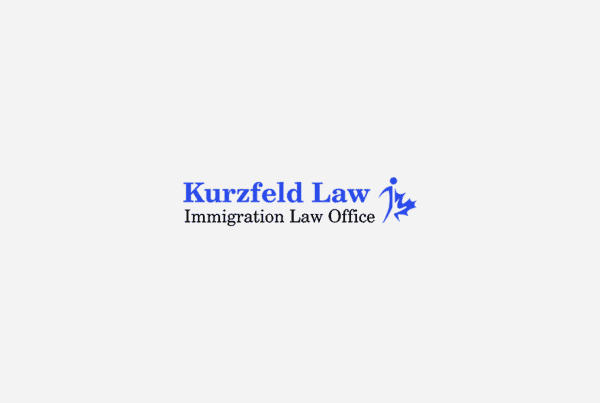A Removal Order is one of the worst nightmares an immigrant, student or working professional can face as it means you cannot remain in the country legally. Depending on the situation and type of removal order, it can come into effect either immediately or after a negative decision if an appeal was made.
Circumstances under which Removal Orders are Issued
There are a variety of circumstances under which a removal order can be issued. Read on to know more:
- An order can be issued after the Immigration Division (ID) or the Immigration Appeal Division (IAD) determines its issuance.
- The removal order can also be issued by the Canadian Border Services Agency (CBSA) after an examination.
- After an individual submits a Refugee claim, a conditional removal order can be issued that can come into effect if the refugee claim is refused or abandoned.
If a removal order is issued, you must know what type of removal order has been issued to determine a course of action.
You can contact us for a consultation if you or any family member may be facing a removal order. We can help guide you through the process and help you understand what type of removal order it is and what course of action makes sense given the circumstances.
Removal Orders Types and Consequences of Each Removal Order
There are three types of removal orders that can be issued and each carries its unique identification number. Look out for the number to identify what type of removal order has been issued. Once you have determined the type of removal order, you must also know the consequences of each type of removal order and how it affects both your present and future stay in Canada.
1. Departure Order (IMM 5238)
Departure Orders have the least consequences. A departure order can be issued for a variety of reasons such as a loss to permanent residence status and refusal of any appeals made. A departure order requires you to leave the country within 30 days and confirm departure with the Canadian Border Services Agency (CBSA) on the exit from Canada. If a “conditional” departure order is issued for a Refugee/Protected Person claimant, the departure order comes into effect if the appeal is refused.
If you have received a Departure Order and you have left Canada within 30 days or you have verified your departure with CBSA at the port of exit, then you do not require an ARC (Authorization to Return to Canada). You can enter Canada again after a normal examination by CBSA at the port of entry.
If you have not left Canada within 30 days of receiving your Departure Order or left without verifying your departure with the CBSA, the departure order then converts into a deportation order. In such a case, you will need to apply for an ARC.
2. Exclusion Order (IMM 1214B)
An Exclusion Order is similar to Departure Order where a foreign national is required to leave the country but it differs from a departure order. In terms of an Exclusion Order, the foreign national is barred from entering Canada for a stipulated period of time. Depending on the situation and why the exclusion order was issued, the foreign national can be barred from Canada anywhere between 1-5 years. Exclusion orders can be issued for violating a variety of Immigration Laws such as entering the country without proper visa authorization, overstaying in the country after visa expiry or studying/working without proper visa documentation or authorization. Such cases often lead to an exemption from the country for 1 year. However, if any details have been misrepresented, the ban can be for 5 years along with other consequences.
One important point to remember is that when an Exclusion Order is issued and you’re residing outside Canada, the exclusion order begins from the date mentioned on the order. However if the exclusion order is issued against the foreign national whilst he/she is in Canada, then it comes into effect on the date the foreign national leaves the country.
If you were issued an exclusion order and 12 months have passed since you left the country or you have a certificate of departure to prove the date on which you left the country, you do not need an ARC to re-enter the country. You could be subject to a normal examination at the port of entry when you land here.
However, if you wish to return to Canada before the 12 month period of the issuance of an exclusion order or you do not have a certificate of departure to prove the date on which you left the country, you will have to apply for an ARC to re-enter Canada.
3. Deportation Order (IMM 5238B)
Deportation orders have a lasting consequence. This is usually issued if a foreign national fails to leave the country within 30 days if a departure order has been issued or they fail to inform the CBSA about their departure from Canada. If a deportation order has been issued, the foreign national is permanently barred from entering the country. In such a scenario, one must apply for Authorization to Return to Canada (ARC) in order to enter the country again.
Schedule a Consultation with an Immigration Professional if you have been issued a Removal Order.
Contact a Licensed Immigration Lawyer in Toronto
Failing to Comply with an Issued Removal Order
You have to take the issuance of a Removal order seriously as it can have grave consequences if you do not comply. A removal order states that you must leave the country and if you do not appear for the interview or fail to return on the date issued CBSA will issue a Canada-wide warrant on your name. This is an arrest order and once you’re arrested you can be detained in a holding facility before removal. If you are removed from Canada due to a departure or exclusion order, you can return without having to appeal for an ARC as long as you are not barred on security or criminality grounds. A deportation order however means that you cannot return without authorization. If your appeal is rejected, there are steps you can take, however, failing to comply with any removal order is not going to work in your favour.
Being faced with a removal order can be quite a harrowing ordeal which is why it is recommended you consult an immigration lawyer in Toronto to help you understand your situation better. Our services are open to such cases and you can call us for a consultation if you or any family member has a removal order issued against them.





